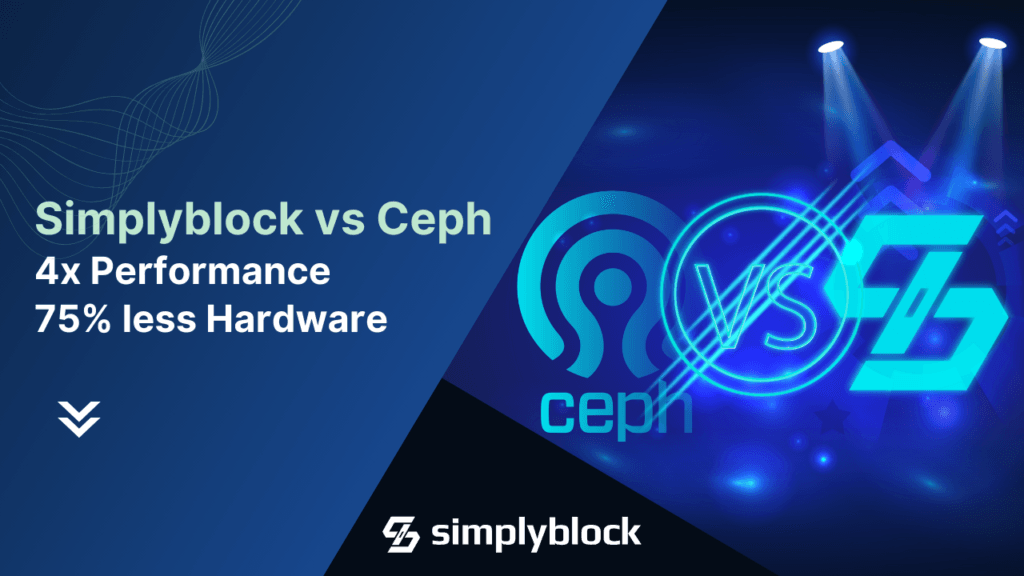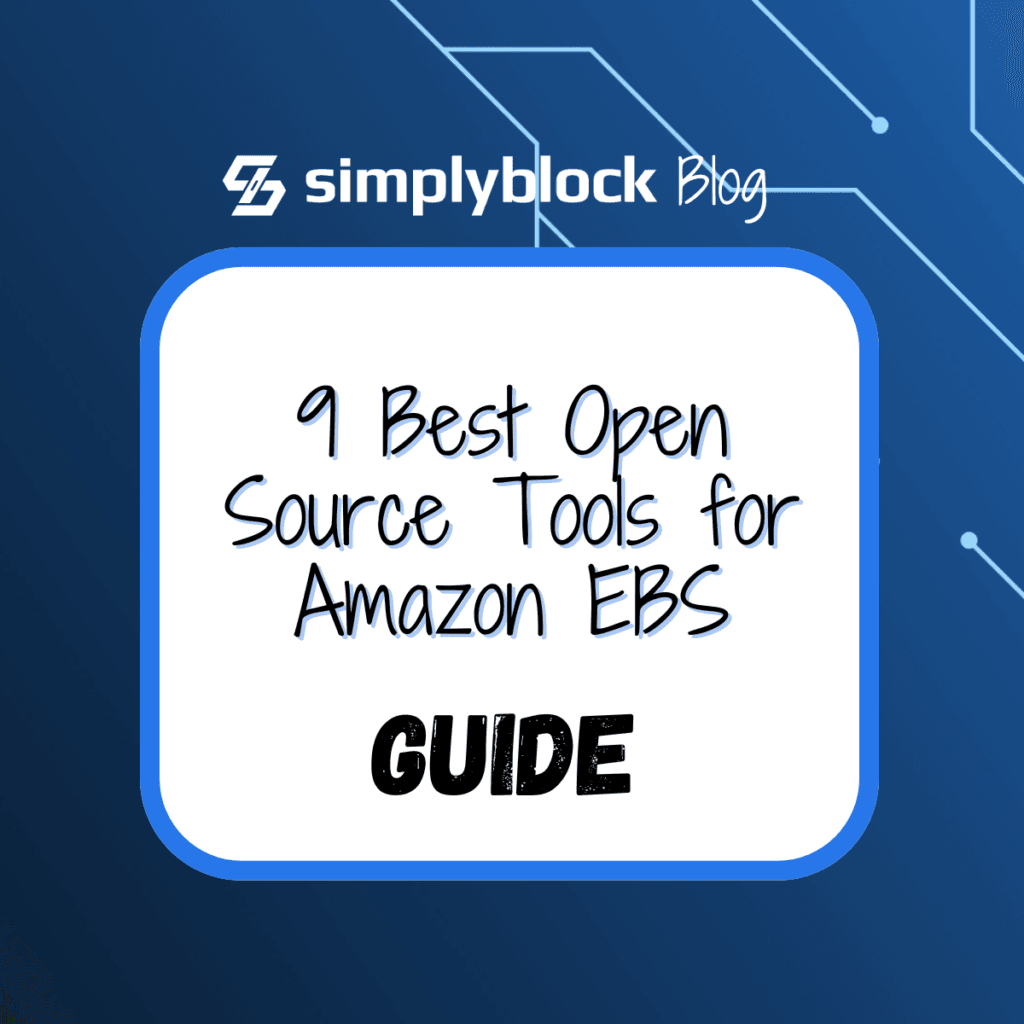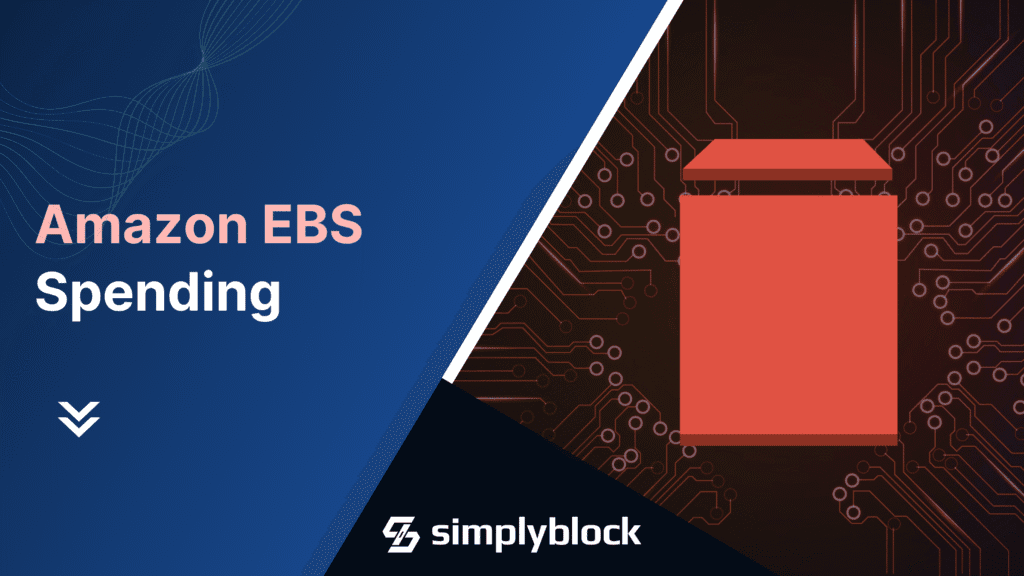Simplyblock for AWS: Environments with many gp2 or gp3 Volumes
Sep 19th, 2024 | 10 min read
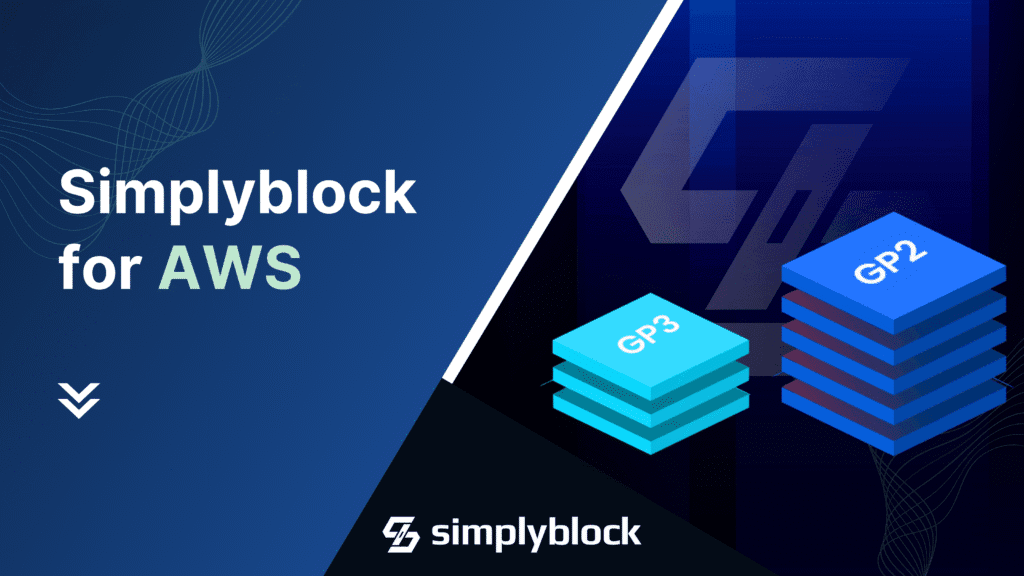
When operating your stateful workloads in Amazon EC2 and Amazon EKS, data is commonly stored on Amazon’s EBS volumes. AWS supports a set of different volume types which offer different performance requirements. The most commonly used ones are gp2 and gp3 volumes, providing a good combination of performance, capacity, and cost efficiency. So why would someone need an alternative?
For environments with high-performance requirements such as transactional databases, where low-latency access and optimized storage costs are key, alternative solutions are essential. This is where simplyblock steps in, offering a new way to manage storage that addresses common pain points in traditional EBS or local NVMe disk usage—such as limited scalability, complex resizing processes, and the cost of underutilized storage capacity.
What is Simplyblock?
Simplyblock is known for providing top performance based on distributed (clustered) NVMe instance storage at low cost with great data availability and durability. Simplyblock provides storage to Linux instances and Kubernetes environments via the NVMe block storage and NVMe over Fabrics (using TCP/IP as the underlying transport layer) protocols and the simplyblock CSI Driver.
Simplyblock’s storage orchestration technology is fast. The service provides access latency between 100 us and 500 us, depending on the IO access pattern and deployment topology. That means that simplyblock’s access latency is comparable to, or even lower than on Amazon EBS io2 volumes, which typically provide between 200 us to 300 us.
To make sure we only provide storage which will keep up, we test simplyblock extensively. With simplyblock you can easily achieve more than 1 million IOPS at a 4KiB block size on single EC2 compute instances. This is several times higher than the most scalable Amazon EBS volumes, io2 Block Express. On the other hand, simplyblock’s cost of capacity is comparable to io2. However, with simplyblock IOPS come for free – at absolutely no extra charge. Therefore, depending on the capacity to IOPS ratio of io2 volumes, it is possible to achieve cost advantages up to 10x .
For customers requiring very low storage access latency and high IOPS per TiB, simplyblock provides the best cost efficiency available today.
To see the full results, check out our Simplyblock for AWS benchmark report for detailed performance data.
Why Simplyblock over Simple Amazon EBS?
Many customers are generally satisfied with the performance of their gp3 EBS volumes. Access latency of 6 to 10 ms is fine, and they never have to go beyond the included 3,000 IOPS (on gp2 and gp3). They should still care for simplyblock, because there is more. Much more.
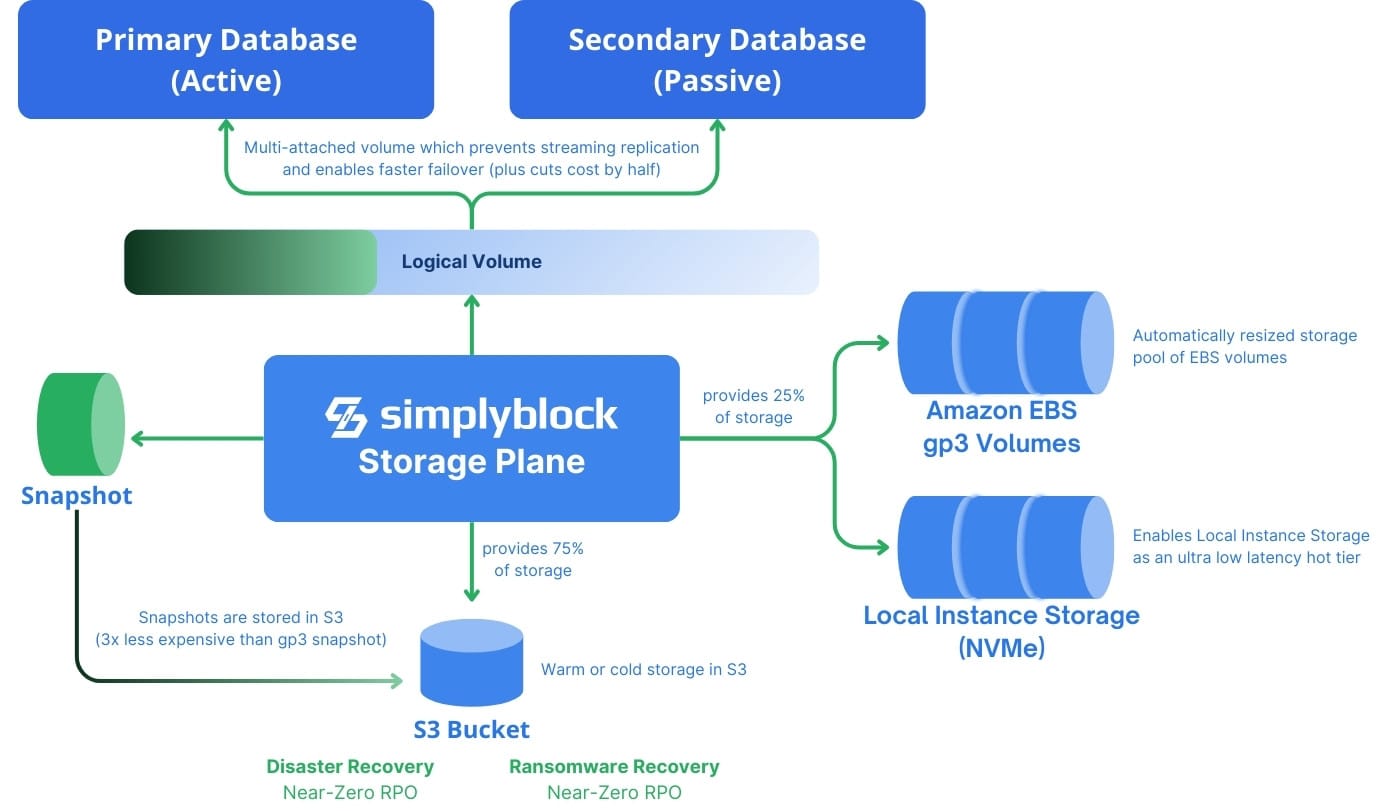
Benefits of Thin Provisioning
With gp3, customers have to pay for provisioned rather than utilized capacity (~USD 80 per TiB provisioned). According to our research, the average utilization of Amazon EBS gp3 volumes is only at ~30%. This means that customers are actually paying more than three times the price per TiB of utilized storage. That said, due to the low utilization below one-third, the actual price comes down to about USD 250 per TiB. The higher the utilization, the closer a customer would be to the projected USD 80 per TiB.
In addition to the price inefficiency, customers also have to manage the resizing of gp3 volumes when utilization reaches the current capacity limit. However, resizing has its own number of limitations in EBS it is only possible once every six hours. To mitigate potential issues during that time, volumes are commonly doubled in size.
On the other hand, simplyblock provides thin provisioned logical volumes. This means that you can provision your volumes nearly without any restriction in size. Think of growable partitions that are sliced out of the storage pool. Logical volumes can also be over-provisioned, meaning, you can set the requested storage capacity to exceed the storage pool’s current size. There is no charge for the over-provisioned capacity as long as you do not use it.

That said, simplyblock thinly provisions NVMe volumes from a storage pool which is either made up of distributed local instance storage or gp3 volumes. The underlying pool is resized before it runs out of storage capacity.
These means enable you to save massively on storage, while also simplifying your operations. No more manual or script-based resizing! No more custom alerts before running out of storage.
Benefits of Storage Tiering
But if you feel there should be even more potential to save on storage, you are absolutely right!
The total data stored on a single EBS volume has very different access patterns. Let’s explore together what the average database setup looks like. The typical corporate’s transactional database will easily qualify as a “hot” storage. It is commonly stored on SSD-based EBS volumes. Nobody would think of putting this database to slow file storage stored on HDD or Amazon S3. 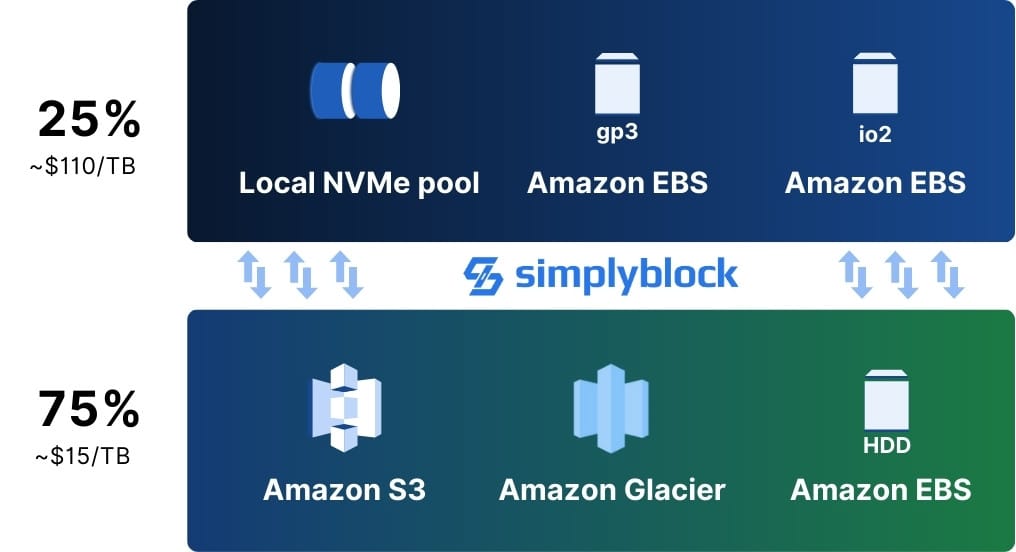
In reality, however, data that belongs to a database is never homogeneous when it comes to performance requirements. There is, for example, the so-called database transaction log, often referred to as write-ahead log (WAL) or simply a database journal. The WAL is quite sensitive to access latency and requires a high IOPS rate for writes. On the other hand, the log is relatively small compared to the entire dataset in the database.
Furthermore, some other data files store tablespaces and index spaces. Many of them are read so frequently that they are always kept in memory. They do not depend on storage performance. Others are accessed less frequently, meaning they have to be loaded from storage every time they’re accessed. They require solid storage performance on read.
Last but not least, there are large tables which are commonly used for archiving or document storage. They are written or read infrequently and typically in large IO sizes (batches). While throughput speed is relevant for accessing this data, access latency is not.
To support all of the above use cases, simplyblock supports automatic tiering. Our tiering will place less frequently accessed data to either Amazon EBS (st2) or Amazon S3, called warm storage. The tiering implementation is optimized for throughput, hence large amounts of data can be written or read in parallel. Simplyblock automatically identifies individual segments of data, which qualify for tiering, and moves them automatically to secondary storage, and only after tiering was successful, cleaning them up on the “hot” tier. This reduces the storage demand in the hot pool.
The AWS cost ratio between hot and warm storage is about 5:1, cutting cost to about 20% for tiered data. Tiering is completely transparent to you and data is automatically read from tiered storage when requested.
Based on our observations, we often see that up to 75% of all stored data can be tiered to warm storage. This creates another massive potential in storage costs savings.
How to Prevent Data Duplication
But there is yet more to come.
The AWS’ gp3 volumes do not allow multi-attach, meaning the same volume cannot be attached to multiple virtual machines or containers at the same time. Furthermore, its reliability is also relatively low (indicated at 99.8% – 99.9%) compared to Amazon S3.
That means neither a loss of availability nor a loss of data can be ruled out in case of an incident.
Therefore, additional steps need to be taken to increase availability of the storage consuming service, as well as the reliability of the storage itself. The common measure is to employ storage replication (RAID-1, or application-level replication). However, this leads to additional operational complexity, utilization of network bandwidth, and to a duplication of storage demand (which doubles the storage capacity and cost).
Simplyblock mitigates the requirement to replicate storage. First, the same thinly provisioned volume can be attached to more than one Amazon EC2 instance (or container) and, second, the reliability of each individual volume is higher (99.9999%) due to the internal use of erasure coding (parity data) to protect the data.
Multi-attach helps to cut the storage cost by half.
The Cost of Backup
Last but not least, backups. Yes there is even more.
A snapshot taken from an Amazon EBS volume is stored in an S3-like storage. However, AWS charges significantly more per TiB than for the same storage directly on S3. Actually about 3.5 times.
Snapshots taken from simplyblock logical volumes, however, are stored into a standard Amazon S3 bucket and based on the standard S3 pricing, giving you yet another nice cost reduction.
Near-Zero RPO Disaster Recovery
Anyhow, there is one more feature that we really want to talk about. Disaster recovery is an optional feature. Our DR comes at a minimum RPO and can be deployed without any redundancy on either the block storage or the compute layer between zones. Additionally, no data transfers between zones are needed.
Simplyblock employs asynchronous replication to store any change on the storage pool to an S3 bucket. This enables a fully crash-consistent and near-real-time option for disaster recovery. You can bootstrap and restart your entire environment after a disaster. This works in the same or a different availability zone and without having to take care of backup management yourself.
And if something happened, accidental deletion or even a successful ransomware attack which encrypted your data. Simplyblock is here to help. Our asynchronous replication journal provides full Point-in-Time-Recovery functionality on the block storage layer. No need for your service or database to support it. Just rewind the storage to whatever point in time in the past.
It also utilizes write- and deletion-protected on its S3 bucket making the journal itself resilient to ransomware attacks. That said, simplyblock provides a sophisticated solution to disaster recovery and cybersecurity breaches without the need for manual backup management.
Simplyblock is Storage Optimization – just for you
Simplyblock provides a number of advantages for environments that utilize a large number of Amazon EBS gp2 or gp3 volumes. Thin provisioning enables you to consolidate unused storage capacity and minimize the spent. Due to the automatic pool enlargement (increasing the pool with additional EBS volumes or storage nodes), you’ll never run out of storage space but also only require the least amount.
Together with automatic tiering, you can move infrequently used data blocks to warm or even cold storage. Fully transparent to the application. The same is true for our disaster recovery. Built into the storage layer, every application can benefit from point in time recovery, removing almost all RPO (Recovery Point Objective) from your whole infrastructure. And with consistent snapshots across volumes, you can enable a full-blown infrastructure recovery in case of an availability zone outage, right from ground up.
With simplyblock you get more features than mentioned here. Get started right away and learn about our other features and benefits.
Questions and Answers
Managing numerous Amazon EBS volumes can lead to storage sprawl, increased costs, and operational complexity. It becomes difficult to track volume usage, automate backups, and optimize performance across a fleet of instances.
To reduce sprawl, consolidate workloads into fewer but larger volumes and monitor utilization. Tools like simplyblock enable Amazon EBS volume optimization by pooling storage and offering visibility, snapshots, and multi-tenant support.
Yes, consider aggregating storage using software-defined storage like simplyblock. It allows dynamic provisioning of virtual block devices on top of larger EBS volumes, reducing AWS limits and improving manageability.
Simplyblock simplifies large EBS setups by virtualizing storage and enabling features like encryption, instant snapshots, and Kubernetes-native integration. It also helps reduce RPO/RTO through fast backup and restore.
Yes. You can deploy simplyblock in your AWS environment using existing EBS volumes as backend storage. It transforms them into high-performance, flexible volumes that support cloud-native use cases without vendor lock-in.

